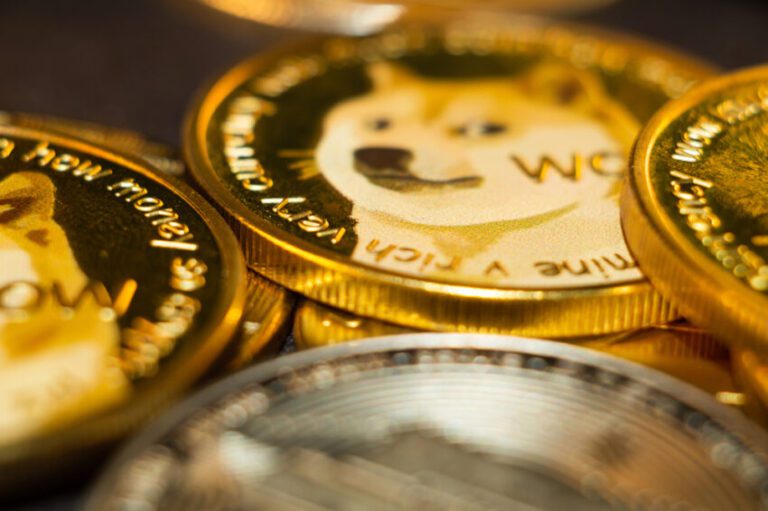The coins started as jokes on the internet but have become a real force in crypto. While some still consider them anything more than games fueled by social media, others recognize a change towards real applications.
Their evolution was wild, with media threshing, speculation, and now, an attempt at legitimacy.
Internet jokes to market movers
Dogecoin launched the trend in 2013, created as a parody of Bitcoin. But what started as a joke has become a serious asset, thanks to the support of the community and to viral attention. This success has paved the way to Shiba Inu, Peters and other tokens that exploded in popularity. By 2021, the parts even had accumulated billions of market values, proving that even the most ridiculous digital assets could attract massive investments.
The Boom of the Memes play and its impact
By 2021 and 2022, the pieces even were no longer a niche phenomenon. They have become an essential element of the cryptography market, traders dedicating whole wallets to these tokens. Social media platforms have played a crucial role in propeling them, transforming speculative trade into a community -oriented movement. Major exchanges began to list the pieces even, offering merchants an easier way to buy and sell them. The influx of liquidity has further cemented their presence in the wider ecosystem of cryptocurrency.
Hype: the engine behind the coins
The coins thrive on attention. Social media, influencers and online forums increase prices in a few hours. Unlike traditional cryptocurrencies with clear use cases, the pieces even often gain value thanks to viral impulse rather than real utility.
They use merchants looking for fast victories. The low cost of entry makes them feel like lottery tickets – a high risk but potentially massive rewards. But that also means extreme volatility, with massive gains followed by just as dramatic collisions. Even chips not put as ACX, which feeds the protocol bridge through, see fluctuations – ACX Crypto Price Often moves according to the feeling of the market.
Utility: go beyond speculation
Media threshing can only carry one part so far. Some projects now add real use, which makes these tokens more than digital casino chips. Some notable trends:
- Integration DEFI – Some coins allow users to put, lend or provide liquidity in decentralized financing configurations.
- Payment options – More companies accept coins as well as payment, even the offer weekly male mass Crypto options.
- Gaming and NFTS – Blockchain -based games now use pieces even for rewards and transactions.
- Charitable gire – Dogecoin and similar projects have collected funds for good causes, proving that they can serve more than merchants.
Same corners vs
While Bitcoin and Ethereum serve decentralized financial networks, the pieces even rest largely on community feeling. This makes them fundamentally different in terms of objective and development. Traditional cryptocurrencies aim to revolutionize finance, while memes pieces often get on internet culture. The contrast between these two categories is marked, but the two continue to shape the digital asset market in their own way.
The risks holding coins
Despite the push of legitimacy, many obstacles remain:
- Regulatory uncertainty – governments warm coins, considering them as vehicles for speculation and fraud.
- Wild price swings – prices can skyrocket in one day and crash just as quickly, making them unpredictable.
- Short lifespan – Many coins disappear as quickly as they appear, with little stay.
- Safety promormations – Some projects lack appropriate guarantees, leaving investors open to scams and carpet prints.
What is the next step for the same parts?
The pieces even need more than the media to survive in the long term. The next phase will focus on sustainability rather than speculation. Some key trends:
- Cloud governance And community control – More coins make power to holders, letting them vote on key decisions.
- Partnerships with larger cryptography networks – instead of existing as isolated tokens, coins are starting to integrate into larger blockchain ecosystems.
- Institutional interest – Some financial companies experience structured investments in coins, referring to a broader acceptance.
- Hybrid use cases – Developers mix meme parts with DEFI, NFTS tools and real world applications.
Can the pieces even last in the long term?
The sustainability of coins depends on how they adapt. Those who fail to innovate the risks vanish in darkness, while projects adding tangible advantages could cement their place in the cryptography ecosystem. With the good balance between community engagement, technological improvements and adoption, some parts even can evolve in more than speculation focused on the Internet.
Final reflections
The coins do not go anywhere, but their survival depends on the evolution. Media threshing will always play a role, but those who offer real value will survive the rest. As they develop in fields like DEFI and payments, their future will depend on their value of value beyond the same. The next few years will show if they can jump for speculative tokens to lasting digital assets.

